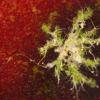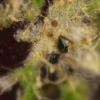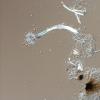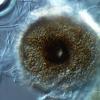
20-10-2022 21:52
 Marc Detollenaere
Marc Detollenaere
Dear Forum,On a non identified crust fungus (Cor

24-10-2022 13:28
 Stephen Martin Mifsud
Stephen Martin Mifsud
I have found what looks to be a polypore species (

10-10-2022 13:06
Juuso ÄikäsThere was a plentiful growth of this red Nectriace

25-07-2022 00:37
 Stephen Martin Mifsud
Stephen Martin Mifsud
So I am working on two isolates of Penicillium, wh

25-11-2017 20:15
 Alex Akulov
Alex Akulov
Dear colleagues,can you help me to find texts of t

20-10-2022 16:53
Juuso ÄikäsThese were growing on a twig of a deciduous tree (

20-10-2022 12:15
This Trichoglossum was on a moorland roadside. Wit

18-10-2022 00:12
Valencia Lopez Francisco JavierHola amigos/asRecientemente encontré esta colecci

15-10-2022 13:37
 Bernard CLESSE
Bernard CLESSE
Bonjour à toutes et tous, Pourriez-vous m'aider

15-10-2022 13:32
 Bernard CLESSE
Bernard CLESSE
Bonjour à toutes et tous,Pourriez-vous m'aider à
 Hello! I wanted to share a fascinating thing I saw this week. This is the coelomycete anamorph state of pyrenolichen Phyllocharis orbicularis (=Strigula orbicularis), which is apparently not illustrated anywhere. I was lucky enough to be able to ask Robert Lücking for help, and he ID'd it right away, having seen it before; when I asked where I could find an illustration, he admitted that he didn't think one existed, only the ascomata and the macromorphology of the thallus. The thallus of this particular example is somewhat poorly lichenized, and looks more like the photobiont (Cephaleuros virescens) than the typical thallus, but the conidia are the really fun part anyway.
Hello! I wanted to share a fascinating thing I saw this week. This is the coelomycete anamorph state of pyrenolichen Phyllocharis orbicularis (=Strigula orbicularis), which is apparently not illustrated anywhere. I was lucky enough to be able to ask Robert Lücking for help, and he ID'd it right away, having seen it before; when I asked where I could find an illustration, he admitted that he didn't think one existed, only the ascomata and the macromorphology of the thallus. The thallus of this particular example is somewhat poorly lichenized, and looks more like the photobiont (Cephaleuros virescens) than the typical thallus, but the conidia are the really fun part anyway.The conidia are hyaline, 4- to 6-septate, 40-45 x 2-3.5 ?m excluding the appendages, with a non-cellular, mucoid appendage at each end, which are quite variable in length, but generally less than 10 ?m, and often curving into a hook. Conidiophores are small, lageniform, reduced to conidiogenous cells, and integrated into the inner wall of the pycnidium.
I really wanted to put these photos out there, so that if anyone else is struggling to identify this beautiful and distinctive anamorph they'll be able to find some reference images! I can't thank Dr. Lücking enough for his kind help in the identification of this fungus.







